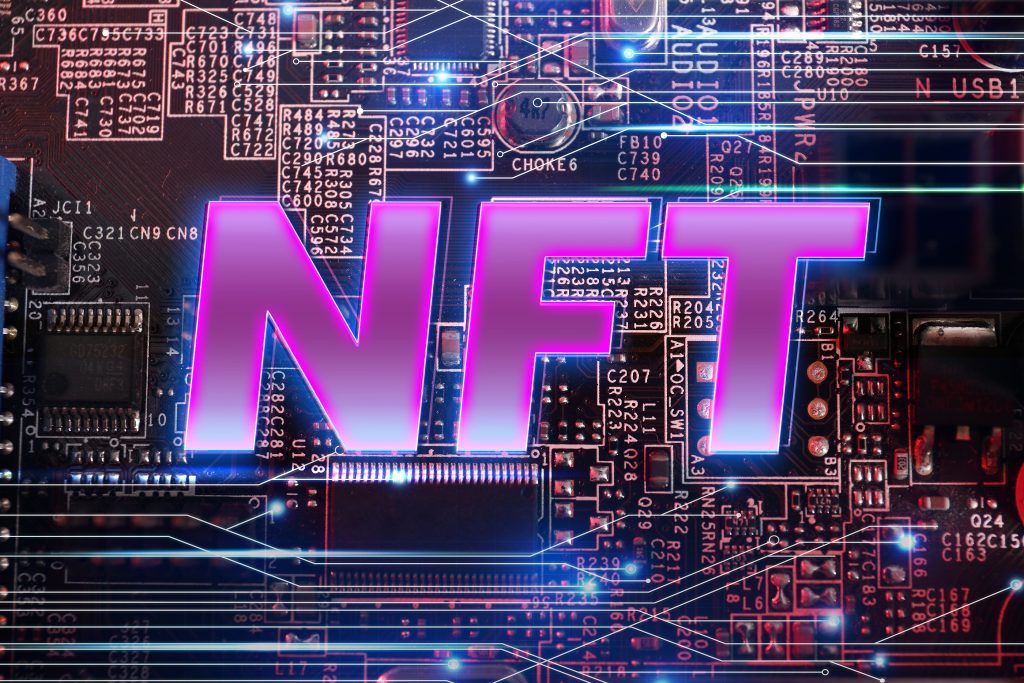What Is Layer 2 Scaling In Crypto?
Layer 2 scaling solutions in cryptocurrencies refer to technologies or protocols built on existing blockchain networks to enhance scalability and improve transaction throughput. These solutions address blockchain networks’ scalability challenges, particularly in handling a large volume of transactions efficiently and cost-effectively.
Layer 2 scaling solutions typically operate “off-chain,” meaning that transactions are processed outside the main blockchain, enabling faster transaction speeds and reduced congestion on the primary network. By leveraging off-chain protocols, Layer 2 solutions can facilitate high-frequency, low-value transactions, such as micropayments and decentralized applications (dApps), while alleviating the burden on the underlying blockchain network.
Typical implementations of Layer 2 scaling solutions include payment channels, sidechains, and state channels, each offering unique approaches to enhancing scalability and reducing transaction costs. These solutions enable offloading transaction processing from the main blockchain, thereby improving overall network efficiency and performance without compromising the security and decentralization of the underlying blockchain protocol.
KEY TAKEAWAYS
- Scalability Improvement: Layer-2 solutions are designed to address the scalability challenges faced by blockchain networks, aiming to enhance transaction throughput and overall network efficiency.
- Off-Chain Processing: These solutions operate off the main blockchain, processing transactions outside the primary network. This off-chain approach enables faster transaction speeds and reduced congestion on the main blockchain.
- Enhanced User Experience: Layer-2 scaling solutions facilitate improved user experience by enabling faster and more cost-effective transactions, particularly suitable for high-frequency, low-value transactions such as micropayments and dApps.
- Maintenance of Security and Decentralization: Despite processing transactions off-chain, Layer-2 solutions are designed to maintain the security and decentralization of the underlying blockchain protocol, ensuring the integrity of the network.
Layer 2 Solutions – Their Goals

The primary goals of Layer 2 solutions in the context of cryptocurrencies include:
- Scalability Enhancement: Layer 2 solutions aim to address the scalability challenges faced by blockchain networks, seeking to improve transaction throughput and overall network scalability significantly.
- Transaction Efficiency: These solutions aim to enhance the speed and efficiency of transactions by processing them off the main blockchain, enabling faster transaction speeds and reducing congestion on the primary network.
- Cost Reduction: Layer 2 solutions strive to lower transaction costs, making them suitable for high-frequency, low-value transactions such as micropayments and decentralized applications (dApps).
- Improved User Experience: Layer 2 solutions aim to enhance the overall user experience by facilitating faster and more cost-effective transactions, contributing to a more seamless and user-friendly decentralized ecosystem.
- Security and Decentralization: Despite processing transactions off-chain, Layer 2 solutions are designed to maintain the security and decentralization of the underlying blockchain protocol, ensuring the integrity of the network.
In summary, the goals of Layer 2 solutions encompass scalability enhancement, improved transaction efficiency, cost reduction, enhanced user experience, and the maintenance of security and decentralization, ultimately contributing to a more efficient and accessible decentralized ecosystem.
The Types Of Layer 2 Scaling Solutions
The types of Layer 2 scaling solutions in the context of cryptocurrencies include:
- Payment Channels: Payment channels, such as the Lightning Network for Bitcoin and the Raiden Network for Ethereum, enable off-chain transactions between parties, facilitating fast and cost-effective micropayments and reducing the load on the main blockchain.
- Sidechains: Sidechains are independent blockchains connected to the main blockchain, allowing for executing transactions and smart contracts off-chain. This approach provides scalability and interoperability while alleviating congestion on the primary network.
- State Channels: State channels enable multiple off-chain transactions between parties, updating the state of their interactions without requiring every transaction to be processed on the main blockchain. This approach supports rapid, low-cost transactions while maintaining security and decentralization.
- Plasma: The Plasma framework, particularly for Ethereum, involves creating scalable and secure decentralized applications (dApps) by establishing child chains that can process transactions independently. This enhances the overall scalability of the Ethereum network.
What Are The Benefits Of Layer 2 Solutions For My Business?

Layer 2 solutions can benefit businesses operating within the blockchain and cryptocurrency space. Some potential advantages include:
- Enhanced Scalability: Layer 2 solutions can significantly improve the scalability of blockchain networks, allowing businesses to process a higher volume of transactions faster. This can lead to improved operational efficiency and better user experiences.
- Lower Transaction Costs: By offloading transactions from the main blockchain, layer two solutions can reduce the associated gas fees and costs, making it more cost-effective for businesses to execute trades and interact with decentralized applications.
- Improved User Experience: Faster transaction processing times and lower fees can enhance the overall user experience, leading to higher customer satisfaction and retention rates. This can be particularly beneficial for businesses offering blockchain-based products and services.
- Expanded Use Cases: With improved scalability and lower costs, businesses can explore and implement a broader range of use cases for blockchain technology, including microtransactions, decentralized finance (DeFi) applications, and non-fungible token (NFT) marketplaces.
- Interoperability and Integration: Layer 2 solutions can facilitate interoperability between different blockchain networks and protocols, enabling businesses to integrate with a broader ecosystem of decentralized applications and services.
Overall, leveraging layer two solutions can position businesses to take advantage of the growing opportunities within the blockchain space, offering improved performance, cost savings, and expanded possibilities for innovation and growth.
Speed & Efficiency Comparisons for Traders

Speed and efficiency are critical for traders, particularly in high-frequency trading (HFT) environments where rapid decision-making and execution are paramount. High-frequency traders utilize advanced technologies and low-latency trading systems to process large orders within fractions of a second, hoping to profit from the low-cost differentials across various markets. The ability to swiftly analyze market data, identify trading opportunities, and execute orders is essential for achieving competitive advantages in fast-paced trading environments. As such, the speed of order execution directly impacts a trader’s ability to react to market fluctuations and capitalize on fleeting opportunities, underscoring the significance of efficient trading platforms and infrastructure.
In high-frequency trading, the efficiency of trading platforms is a crucial consideration for traders. Platforms that offer ultra-low latency and high-frequency data processing capabilities are highly sought after, as they enable traders to execute orders with minimal delay, thereby maximizing their ability to exploit short-term market movements. Additionally, the reliability of trading platforms is essential, as any downtime or system glitches can result in missed trading opportunities or financial losses. Therefore, traders often assess the performance and uptime of trading platforms to ensure consistent and uninterrupted access to the market.
Moreover, the speed and efficiency of order execution play a pivotal role in determining a trader’s success in capturing market opportunities and managing risk. Fast and reliable order execution is essential for swiftly entering and exiting positions, managing portfolio exposure, and implementing trading strategies effectively. For high-frequency traders, the ability to execute orders at optimal prices within milliseconds is a crucial determinant of profitability, making speed and efficiency critical factors in platform selection and trading operations.
In conclusion, speed and efficiency are fundamental considerations for traders, particularly in high-frequency trading. The rapid execution of orders, supported by efficient trading platforms and infrastructure, is essential for capitalizing on fleeting market opportunities and maintaining a competitive edge in fast-paced trading environments. As such, traders prioritize platforms that offer ultra-low latency, high reliability, and seamless order execution to enhance their ability to navigate dynamic market conditions and achieve trading objectives.
Developer Integration Guides

Integrating with Layer 2 scaling solutions involves using specific protocols or technologies designed to enhance the scalability and performance of blockchain networks. Here are integration guides for some notable Layer 2 scaling solutions:
Optimistic Rollups (Optimism)
Developer Resources:
Official Documentation: Optimism has developer-focused documentation and guides on its website, offering technical details, API references, and tutorials.
GitHub Repository: Access to open-source code, examples, and development resources for integrating with Optimism’s Layer 2 solution.
Optimistic Rollups, developed by Optimism, is a Layer 2 scaling solution for Ethereum. They aim to improve the scalability and efficiency of the Ethereum network by moving computation and storage off-chain while maintaining security and trustlessness. Optimistic Rollups leverage optimistic execution, allowing fast and cost-effective transaction processing by aggregating multiple off-chain transactions into a single batch before submitting them to the Ethereum mainnet. This approach enhances the network’s throughput and reduces transaction costs while preserving the security guarantees of the underlying blockchain. For detailed technical information and developer integration guides, I recommend referring to the official documentation and resources provided by Optimism.
zkRollups (zkSync, Loopring, StarkWare)
Developer Resources:
zkSync Developer Documentation: Detailed technical documentation, API references, and step-by-step guides for integrating with zkSync.
Loopring Developer Portal: Guides, SDKs, and tools for developers to integrate with Loopring’s zkRollup technology.
StarkWare Resources: Technical resources, research papers, and developer tools for StarkEx, StarkWare’s Layer 2 scaling solution.
zkRollups is a type of Layer 2 scaling solution designed to enhance the scalability and efficiency of blockchain networks, with zkSync, Loopring, and StarkWare being prominent implementations. These solutions utilize zero-knowledge proofs to aggregate and bundle multiple off-chain transactions into a single concise explanation verified on the main blockchain. By moving transaction processing off-chain while maintaining the security and trustlessness of the underlying blockchain, zkRollups significantly improves transaction throughput and reduces fees. Developers and users can benefit from the increased scalability and cost-effectiveness offered by zkRollups, making them an essential advancement in the blockchain space. I recommend referring to the official documentation and resources provided by zkSync, Loopring, and StarkWare for detailed technical information and developer integration guides.
Polygon (formerly Matic Network)
Developer Resources:
Polygon Developer Documentation: Guides, tutorials, and APIs for integrating with Polygon’s Layer 2 solutions. It includes information on using various tools like the Polygon SDK.
GitHub Repository: Access to open-source code, examples, and development resources for building on Polygon.
Polygon, formerly Matic Network, is a Layer 2 scaling solution for Ethereum, offering a framework for building and connecting Ethereum-compatible blockchain networks. It aims to address Ethereum’s scalability issues by providing a multi-chain system that supports interoperability and scalability while retaining Ethereum’s security and decentralization. Polygon leverages various technologies such as sidechains, plasma, and other scaling solutions to enable faster and more cost-effective transactions, making it an attractive option for developers and users seeking to overcome Ethereum’s limitations. For detailed technical information and developer integration guides, I recommend referring to Polygon’s official documentation and resources.
Arbitrum
Developer Resources:
Arbitrum Developer Documentation: Technical documentation, developer guides, and resources for integrating with Arbitrum’s Layer 2 scaling solution.
GitHub Repository: Source code, examples, and development resources for building on Arbitrum.
Arbitrum is a Layer 2 scaling solution for Ethereum, designed to enhance the network’s scalability and efficiency. Developed by Offchain Labs, Arbitrum employs optimistic rollup technology to process and aggregate off-chain transactions before submitting them to the Ethereum mainnet. This approach aims to significantly increase transaction throughput and reduce fees while maintaining the security and decentralization of the Ethereum blockchain. For detailed technical information and developer integration guides, I recommend referring to the official documentation and resources provided by Offchain Labs for Arbitrum.
Other Layer 2 Solutions
For other Layer 2 solutions like Validium, Optimistic Ethereum, or different variants, exploring their official websites, developer portals, GitHub repositories, and forums dedicated to those specific technologies will provide detailed integration guides, SDKs, and documentation.
Developers looking to integrate with Layer 2 scaling solutions should familiarize themselves with each solution’s architecture, APIs, SDKs, and best practices outlined in their respective documentation. Participating in developer communities, forums, and hackathons related to these solutions can provide valuable insights and support during the integration process.
Demonstrating Layer 2 Solutions With Real-World Examples
Layer 2 solutions are being actively applied in real-world scenarios to address the scalability and cost challenges of blockchain networks. One prominent example is the integration of layer 2 scaling solutions, such as Polygon (formerly Matic Network), by decentralized finance (DeFi) platforms and non-fungible token (NFT) marketplaces.
For instance, a DeFi platform experiencing high gas fees and slow transaction processing times on the Ethereum mainnet may implement Polygon’s layer 2 scaling solution. By doing so, the platform can significantly reduce transaction costs and enhance the speed of interactions, providing users with a more seamless and cost-effective experience.
Similarly, NFT marketplaces have adopted layer 2 solutions to mitigate the congestion and high fees associated with minting, trading, and transferring digital assets. Integrating layer 2 scaling solutions has enabled these marketplaces to offer a more efficient and affordable environment for creators, collectors, and traders to engage in NFT-related activities.
These real-world examples illustrate the transformative potential of layer 2 solutions in addressing the scalability and usability challenges of blockchain networks. By effectively offloading transactions to secondary layers, businesses and platforms can enhance their operational efficiency, reduce costs, and provide a more seamless experience for their users, ultimately driving broader adoption and utilization of blockchain technology.
Scaling Blockchains: The State of Layer 2 Solutions
Layer 2 solutions are a set of techniques and technologies designed to improve the scalability and performance of blockchain networks. These solutions aim to alleviate the limitations of blockchains, such as slow transaction speeds and high fees, by processing transactions off-chain or in a layer above the main blockchain.
There are several types of layer two solutions, including state channels, sidechains, and off-chain protocols. State channels, for example, enable users to conduct off-chain transactions and only settle the final state on the main blockchain, reducing the overall load on the network. Sidechains allow for the creation of parallel blockchains that can process transactions independently before settling them on the main chain. Off-chain protocols, such as the Lightning Network for Bitcoin, facilitate instant and low-cost transactions by conducting them off-chain and determining the final state on the main blockchain.
Cost Analysis for NFT platforms

Cost analysis for NFT platforms encompasses various factors, including development, deployment, and ongoing operational expenses. Innovative contract development, user interface design, and blockchain integration are essential components that contribute to the initial development costs. Additionally, considerations for gas fees, storage, and transaction costs are crucial, especially when dealing with blockchain-based assets. The complexity of the platform’s features, scalability, security, and customizability also influences the overall cost analysis, as more advanced functionalities may require additional resources and investment.
Operational expenses, such as ongoing maintenance, hosting, and infrastructure costs, are significant considerations in the cost analysis for NFT platforms. Furthermore, regulatory compliance, legal considerations, and user experience enhancements are essential factors that contribute to the overall expenses. Assessing long-term operational costs is vital to ensure sustainable and efficient platform management.
Moreover, the market positioning and competitive landscape can impact the cost analysis for NFT platforms. Understanding the competitive environment and user demand can help determine the necessary investment for marketing, user acquisition, and platform growth. Additionally, ongoing research and development for innovation and feature enhancements should be factored into the cost analysis to ensure the platform remains competitive and relevant in the evolving NFT ecosystem.
Collaboration with industry experts, blockchain developers, and financial analysts may be beneficial for a comprehensive cost analysis. Engaging with professionals with experience in NFT platform development and management can provide valuable insights into cost considerations and help create a well-informed cost analysis strategy.
Ethereum Layer 2 Scaling Solutions Explained Rollups, Side Chain
These layer-two scaling solutions aim to improve the scalability, throughput, and user experience of the Ethereum network, making it more efficient for decentralized applications and reducing transaction costs for users. It’s important to note that the landscape of layer two scaling solutions constantly evolves, with new developments and innovations continuously emerging in the Ethereum ecosystem.
Frequently Ask Questions
Q: What are Layer 2 scaling solutions in cryptocurrencies?
A: Layer 2 scaling solutions aim to improve blockchain scalability and throughput by handling transactions off-chain while relying on the underlying main blockchain for security and finality.
Q: How do Layer 2 solutions differ from the main blockchain?
Layer 2 solutions don’t alter the underlying blockchain protocol but introduce mechanisms, such as sidechains or state channels, to process and settle transactions off-chain, reducing congestion on the main chain.
Q: What are the different types of Layer 2 scaling solutions?
There are various types, including state channels (like Lightning Network for Bitcoin), sidechains (such as Polygon or Arbitrum), and rollup solutions (like Optimistic Rollups and zkRollups).
Q: What problems do Layer 2 solutions solve?
Layer 2 solutions address blockchain scalability issues, reducing transaction costs and improving throughput. They aim to enhance user experience by making transactions faster and more cost-effective.
Q: Are Layer 2 solutions secure?
Layer 2 solutions maintain security by relying on the underlying blockchain’s security model. They use mechanisms like cryptographic proofs and smart contracts to ensure transaction validity.
Q: Do Layer 2 solutions support all cryptocurrencies?
Different Layer 2 solutions are tailored for specific blockchains. Some answers are compatible with multiple blockchains, while others are designed for a particular blockchain ecosystem.
Q: How do I use Layer 2 scaling solutions?
Users interact with Layer 2 solutions through supported wallets, exchanges, or dApps. Transactions are processed off-chain, and the final settlement occurs on the main blockchain.
Q: Do Layer 2 solutions impact decentralization?
Depending on the architecture, some Layer 2 solutions might introduce trade-offs between scalability and decentralization. However, many aim to maintain decentralization while improving scalability.
Q: What are the costs associated with using Layer 2 solutions?
Users might incur fees for onboarding and offboarding transactions between Layer 1 and Layer 2. However, transaction costs and processing fees on Layer 2 networks are typically lower than on the main chain.
Q: Are there risks involved in using Layer 2 scaling solutions?
Risks may include potential vulnerabilities in specific implementations, the need for trust in certain parties (depending on the solution), and the possibility of intelligent contract bugs.
Q: Which Layer 2 solution should I choose?
The choice depends on the supported blockchain, use case, security considerations, ecosystem support, and user experience. Researching and understanding each solution’s features is crucial.
Conclusion
In conclusion, crypto layer two scaling solutions offer promising opportunities to address blockchain networks’ scalability and efficiency challenges. These solutions, such as Optimistic Rollups, zkRollups, Polygon, and Arbitrum, leverage innovative technologies to enhance transaction throughput, reduce fees, and improve user experience while preserving the underlying blockchain’s decentralization and security. As the demand for blockchain-based applications and decentralized finance (DeFi) continues to grow, layer two scaling solutions play a pivotal role in enabling blockchain technology’s broader adoption and usability.
Users and developers stand to gain from the increased scalability, cost-effectiveness, and enhanced functionality provided by layer two solutions, paving the way for a more seamless and robust blockchain ecosystem. However, it is essential to consider the trade-offs, security implications, and interoperability aspects when integrating and deploying these solutions. Additionally, ongoing research, collaboration, and innovation in developing layer two scaling solutions are crucial to addressing evolving challenges and advancing the scalability of blockchain networks.
Overall, crypto layer two scaling solutions represent a significant advancement in the blockchain space, offering a pathway to overcome the limitations of the leading blockchain while unlocking new possibilities for decentralized applications, tokenization, and digital asset management. As the technology continues to evolve, developers, industry stakeholders, and users need to stay informed about the latest developments and advancements in layer 2 scaling solutions to harness their full potential and drive blockchain technology’s continued growth and adoption.

RELATED ARTICLES
- DeFi Security Concepts for Beginners
- Crypto Taxation and Legislation for Beginners: What I need to know
- 4 retirement investing tips from a financial advisor
- Bitcoin Market Cycles and You
- How to start trading?


Announcing Your New 21st Century

Dear Trader,
Follow me on what could be the most exciting and rewarding adventure of your life!
“I guess you could call it a hobby for me because I do enjoy doing it.
But it’s also a job, because it provides an income source. So it’s a job
that I enjoy doing. And it can be very exciting.”
Dr. Jack, Hilton Head, SC –Retired Optometrist
“For me it’s income in excess of $150,000 a year… Spending just a
few minutes a day… And I can do it right on my phone from just
about anywhere!”
Craig F., Central CA — Retired Program Director
“I’m averaging over $10,000 a month. We went on cruises to Nova
Scotia, the Mediterranean, Alaska… And I was able to help two of my
children buy homes. We couldn’t have done this before.”
Rod W., Atlanta, GA Retired Pharmacist
Health, wealth, and happiness go hand-in-hand…
Click here to find out how you can potentially ignite all three!
Sincerely,

PS Imagine if it were possible for you to enjoy a 6-figure income… PLUS
increased mental & physical vitality well into your ‘90s… CLICK HERE





